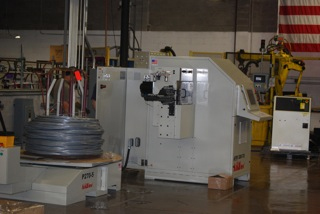
Over the last few years, NPQ has published a number of nonprofit newswires (here, here, and here) on the place of worker-owned cooperatives in refitting our economic system so that profits are more equitably shared by those doing the work. Today, we wanted to put that concept together with these thoughts about the potential of small manufacturing to rebuild community economies.
As you may remember, Rochester, New York, is pursuing a cooperative strategy to address systemic poverty. What is the potential for putting these two concepts together, and what part should the nonprofit sector have in that? The following story illustrates the importance of flexibility and agility in much of manufacturing, making survival a challenge for the behemoth industrial structures of the past, but what kind of manufacturing sector might be built in its place? Perhaps one that is networked and puts the intelligence of employees to full use, and therefore can adapt with the right kinds of capital investments by such programs as Rochester is backing.
Marlin Steel calls the West Baltimore area home. For its twenty-four employees, it is a beacon of hope in an area with very few opportunities. Its story illustrates the rise of the American manufacturing sector, and the challenges it continues to face.
Today, James Branch works as a skilled machine operator at Marlin Steel. Earning a base wage of over $20 an hour and earning almost $70,000 annually, he is living a version of the American Dream, renting a two-story townhouse and recently watching his daughter graduate from college with a degree in psychology. But it was not always that way. Mr. Branch sold drugs for a dozen years after dropping out of high school. He fathered his daughter when he was sixteen and he served time in prison. His turnaround is due to hard work and perseverance but it is also due to the survival of Marlin Steel. Although manufacturing continues to have a strong grip on America, urban industrial manufacturers like Marlin Steel make for uncommon employers. Unlike the growing number of service jobs, skilled manufacturing jobs continue to disappear, leaving many workers without health benefits and sustainable wages.
Marlin Steel was born in Brooklyn almost fifty years ago, producing basic, durable welded-wire bagel baskets. During its first 30 years, the factory prospered. Everything was done by hand, and many workers paid for it, losing eyes and fingers. At the start of the 21st century, the factory’s very existence was threatened—the low-carb craze meant that the market for its bagel baskets disappeared, and the factory had to fight competition from overseas, where similar products sold for what Marlin paid for materials alone.
Sign up for our free newsletters
Subscribe to NPQ's newsletters to have our top stories delivered directly to your inbox.
By signing up, you agree to our privacy policy and terms of use, and to receive messages from NPQ and our partners.
To survive, Marlin had to evolve. In 1999, the manufacturer followed many others south and was reborn in Baltimore. Refurbishing its factories with robotics meant that it could produce baskets at almost a hundred times faster than it did in the 1960s for bigger manufacturers like Ford Motor, Boeing and Merck. Revenues increased from $800,000 to $5 million, and their personnel ranks grew from 18 to 24.
In the last twenty years, the number of American manufacturing jobs has declined by a third, sending many of its workers into poverty. Of the manufacturers that remain, like Marlin, the majority are small factories. Today, there are 252,000 manufacturing companies in the United States, most with fewer than twenty workers.
NPQ’s feature today is by one of the great thinkers in cooperative economic structures, Gar Alperovitz, and we encourage you to read or reread it. But we also want to leave you with these thoughts from Douglas Rushkoff:
I think that the nonprofit sector in particular is perfectly situated to help us transition to a different economic landscape. You know, most nonprofits think of themselves as doing something good, but what I want to try to make them more aware of is that the nonprofit structure itself, the way the business is actually structured, may be doing more good than whatever their particular business is.
While the public looks at nonprofits as do-gooders, we’re looking at the structure of nonprofits and not-for-profit corporations as business entities. Because they’re not for sale, because they’re not shareholder- or share-value-maximizing companies, what they end up doing is promoting revenue, the exchange of value, and the circulation of money, which revives a whole economy rather than enriching the few. Can the nonprofit sector get its head around a larger strategy of cooperatively-run networked businesses? Should it?—Gayle Nelson and Ruth McCambridge













